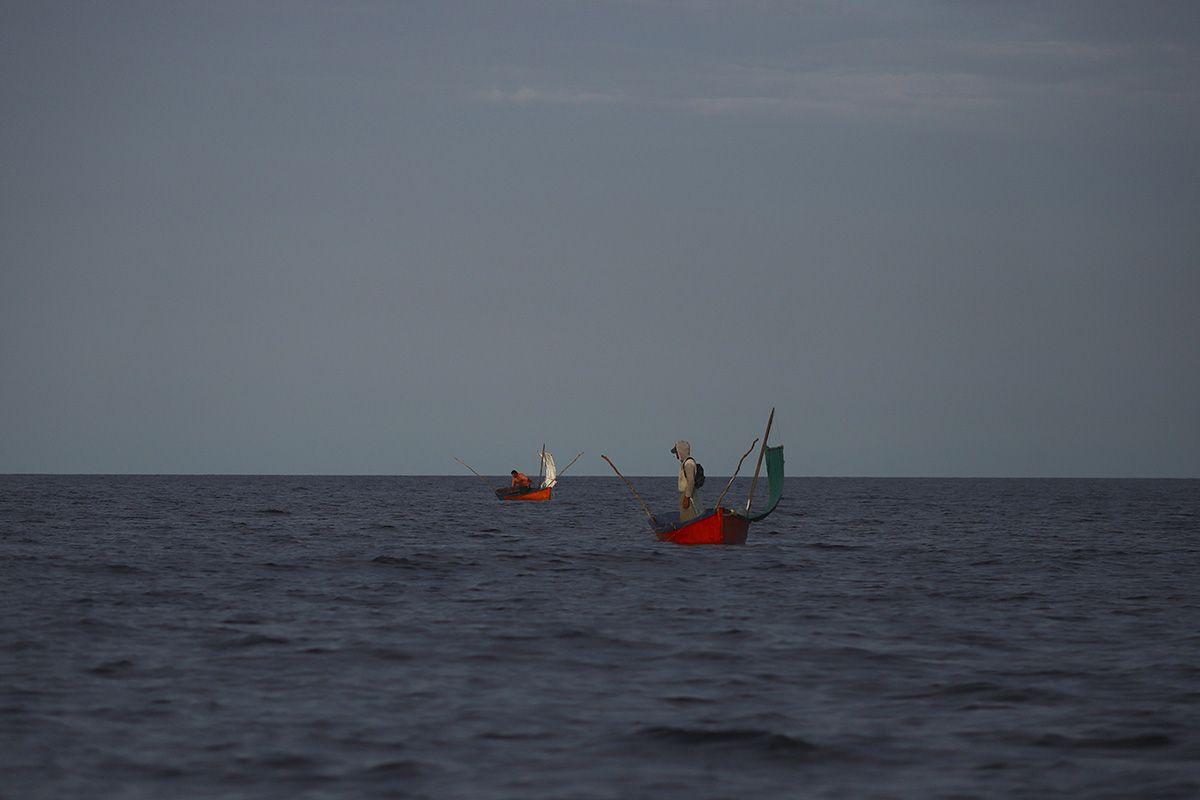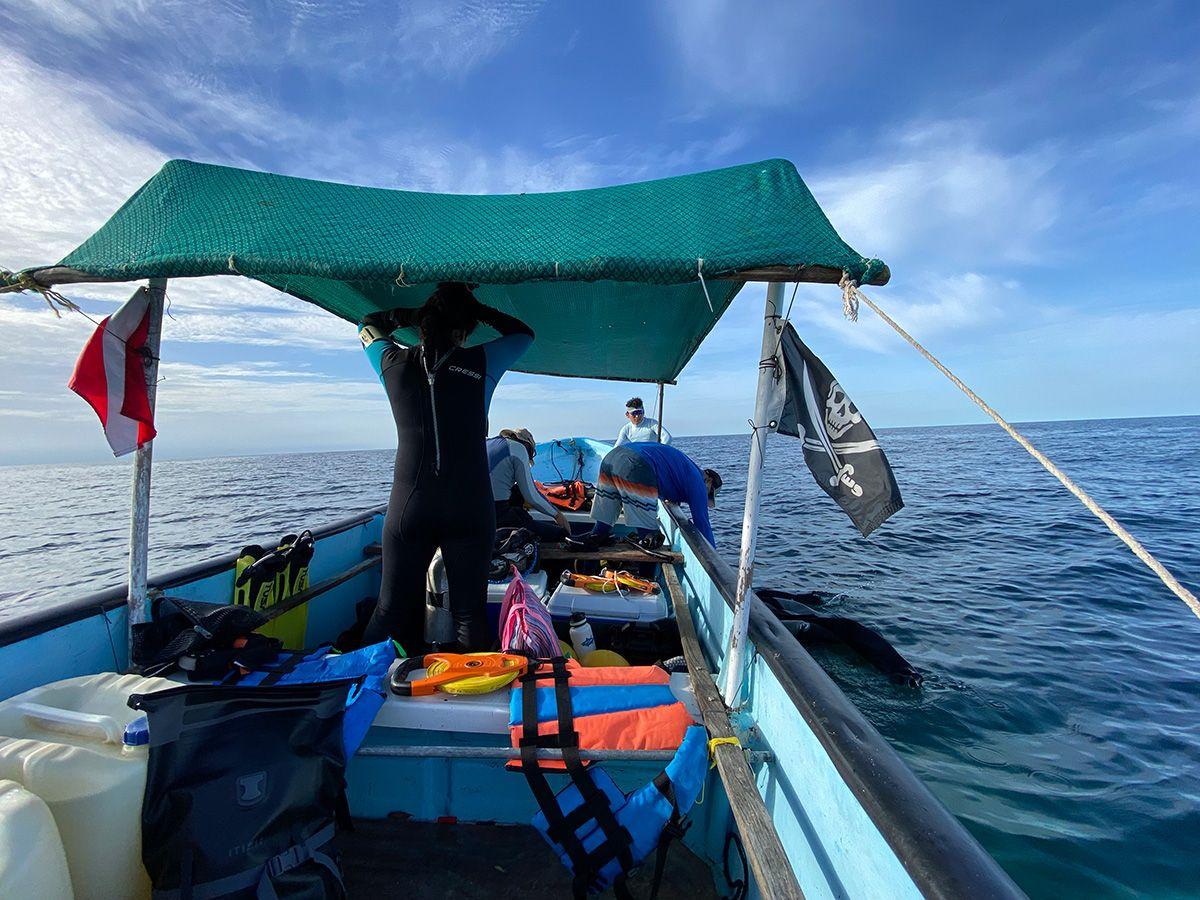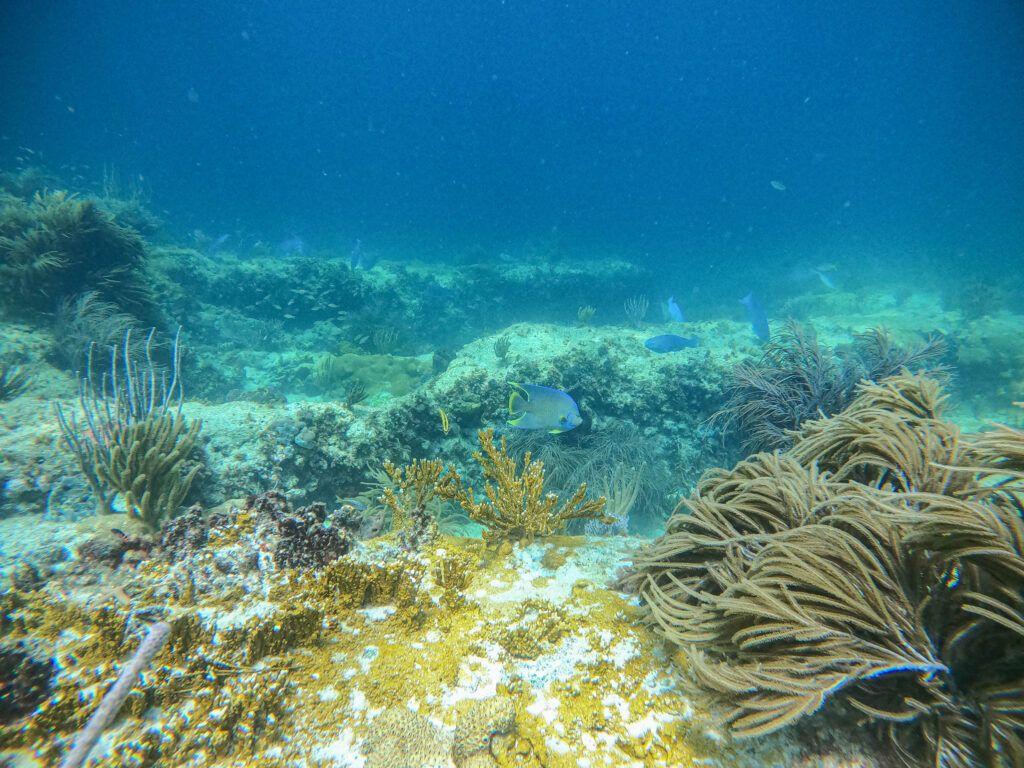We're floating in the middle of nowhere. It was just over an hour and a half ago that we last saw the mainland and since then, only the sea and the sky have spread around us.
We were never exactly alone. Along the way we came across some cayucos, boats little bigger than a canoe, with jimbas installed to catch octopuses.

He also went on to greet a snorkel, although only Enrique Cámara, the lanchero, noticed his presence, who described him perfectly until we reached the lonely spot where he stopped.
“This is it,” she tells the passengers and passengers of María de Guadalupe: her assistant, Didier Sánchez; three reef specialists from the Multidisciplinary Teaching and Research Unit of the National Autonomous University of Mexico (UNAM) in Sisal, Quetzalli Hernández, Rodrigo Garza and Johhny Valdez, and the person who wrote this text.
We took a look. In effect, water is no longer a dark emerald mantle. It is a crystalline aquamarine pool. What is there is no longer a mystery: from the gentle wiggle of the boat it is possible to see the distorted image of anonymous algae, purple schools, litmus fish...
We are in Madagascar, a rocky reef of sedimentary origin, 2.5 kilometers long located 40 kilometers off the coast of Sisal, in Hunucmán, to the west of the state of Yucatán.
It is difficult to imagine that at this point where immensity now reigns, just a few weeks ago, a giant broke the horizon and the stillness: the “Greater Senegal”, a cargo ship 211 meters long and 33 meters wide, from Grupo Grimaldi, carrying vehicles.
Nobody knows or understands how such a large and sophisticated ship, which according to navigation tracking portals left Altamira, Tamaulipas, bound for Brunswick, United States, got stuck in that area between 4 and 13 meters deep, which has been on navigation charts since 1600 and is famous for its abundance of fishing resources.
In fact, the Sisaleño fishermen noticed their presence until Sunday, July 23, purely by chance. According to Didier, one of the seafarers went to the bottom of Madagascar to dive and bumped into the boat. He recorded a video and showed it to his colleagues.
A week later, they learned that three ships were carrying out maneuvers to tow it, which alarmed them: they feared that they would do so without caution, would damage the area from which they made great profits and would flee without repairing the damage. They organized and held a water protest. The tension was such that the Secretariat of the Navy (Semar) and the National Commission for Protected Areas (Conanp) had to intervene.
The Federal Attorney's Office for Environmental Protection (Profepa) issued two statements: first it said that the stranding only damaged 87 meters in length of the rocky ridge of the reef structure. He later admitted that 4,959 square meters of the area were possibly affected, but no coral species protected by the Official Mexican Standard (NOM) 059 were damaged.
The truth is that the fishermen were still uncertain. No authority responded directly to their concerns and tension in the union increased. In fact, they held another protest in Mérida, the Yucatecan capital, to demand that the damage be repaired.

For this reason, Causa Natura Media, together with specialists from the UNAM, decided to investigate what the road left behind. So we ended up rocking at 7 in the morning in that small colorful backwater in the middle of the ocean.

Quetzalli, Rodrigo and Johnny prepare tanks, masks and other diving equipment, as well as cameras and other instruments in the small space of the boat: they will do a one-hour dive to review and characterize the stranding area and the trawling area left by the action of towing the boat, then a bathymetric survey to obtain a profile of the bottom of the affected area, and finally another dive to compare the damaged area with the area that was not touched.
They place a smiling buoy in the water, throw themselves with their backs to the sea and disappear to do the tests.
As the sun advances to position itself in the middle of the celestial vault, other boats begin to arrive, with fishermen and tourists on board. Some people greet us, others look at us suspiciously. There are divers and divers who also take a look at the reef.
Shortly before noon we start our return. As they try to shake off the saltpeter and eat a sandwich, the researchers are vaguely defeated by fatigue, vaguely optimistic. From there they confirm that the reef will never be the same again. But that doesn't mean all is lost.
There is no damage to the Madagascar reef species
Days after the visit, when they studied and processed what they saw and captured on the cameras, Quetzalli and Rodrigo explain their findings to me.
Basically, 2.7% of the total area of the reef, between 4 thousand and 6 thousand square meters, was damaged. The change in that area is permanent because its origin is sedimentary. In other words, at some point that part was exposed above sea level and that's when the sand structure mineralized to create a kind of rock. There are no natural conditions for this to happen again. Therefore, there is no effective method of restoration for that place.
The Madagascar reef will no longer look like it used to, but that's not necessarily bad news.
However, the damaged area is relatively small compared to the total extent of the reef, so it does not significantly affect the structure or function of this ecosystem.
The shallow part (the highest, the one close to the surface) was damaged and, although only sedimentary rock exposed as debris can be seen in that part, its coral cover was not as rich as that of the deeper areas, which received less impact.
“On the slopes of the reef there are covers of between 80 and 90% of octocorals, which are soft corals since they do not have a calcium carbonate skeleton; there are zooantids and some colonies of fire coral. The damaged part had less biotic coverage”, emphasizes Rodrigo.
On the other hand, the stranding area looks “swept away”: full of bare rock. But that's not exactly bad news. According to Quetzalli, this calcareous rock is liked by certain species that seek substrate to settle and begin their development. Debris can also create hiding places.
“The reef will never look the way it looked before, however, these modifications could generate new larval settlements, new spaces, recesses for fish to shelter. Of the evils, the least: yes, it was an abrupt modification, but it is not something that will generate a radical change in reef relations in a drastic way. We saw a lot of fish,” he says.
In fact, at the time of the dives, she and her colleagues observed that the exposed slab was already beginning to be occupied by several species. And they observed high biomass of medium and juvenile herbivorous fish of commercial interest, such as groupers and blondes, which is a good sign. They also saw schools of browns, chac-chís and different invertebrates. And they detected a layer of microalgae that is attracting large numbers of colorful parrotfish to eat.
Although the forecast is positive, UNAM specialists warn that reefs are going through a crisis due to climate change and overfishing, so they recommended monitoring the area frequently. Underwater photography by Quetzalli Hernández, Rodrigo Garza and Johnny Valdez
The specialist estimates that in about 10 or 15 years the scar left by “Greater Senegal” could already be completely colonized by octocorals, zooanthids, fire corals, and other species, and could look similar to undamaged parts. It is likely that the debris left behind by the stranding could, ironically, become a refuge for various marine species.
However, he also admits that this optimistic forecast is just that: a forecast, which is threatened because right now the reefs of all the country's coasts are going through a stress crisis due to high temperatures and overfishing.
“The stranding occurred at a historic moment in which there is not only a stress factor in reef areas. Madagascar will probably recover its functions in 10 or 15 years, but right now we don't just have a stress factor: we have warming, overfishing... so if you add those factors to a stranding, the negative effects of stress on this reef are added”, warns Quetzalli.
Rodrigo agrees. Conditions in Madagascar may remain relatively stable, but they could change abruptly due to global warming, and then not only the stranding area but the entire structure would be compromised.

For this reason, they strongly recommend that the authorities keep monitoring the area in two directions: the first, to constantly monitor the damage and detect if something is wrong with the reef in a timely manner.
“There is a need to continue evaluating these types of events in the medium and long term to analyze what other factors are affecting them. We are not isolated just by a stranding, but the reef is constantly suffering from different factors,” says Quetzalli.
The second is to avoid other roadblocks. Both express their surprise at the fact and urge that “human errors” of this type no longer occur, because the consequences could be serious and irreparable.
“This is a wake-up call, because artisanal fleets operate in this area, small boats, so it is important to establish and define channels or navigation routes for large boats very well. Imagine that someone on a very large boat of this type doesn't pay attention: they can run over even a group of cayucos that are catching octopus. A greater shipping system is required, which will benefit both fishermen and large vessels,” Rodrigo points out.
Meanwhile, Sisal's fishermen demand that the responsible company repair the damage directly with the community. Federal officials have sworn to hear your requests.
Profepa stated that it initiated administrative proceedings because of the events and in the meantime, the ship is in Puerto Progreso, guarded by Semar personnel. Causa Natura Media asked about the progress of this procedure but so far the agency has not answered.
We're still waiting...



Comentarios (0)